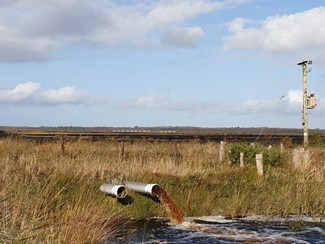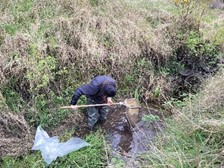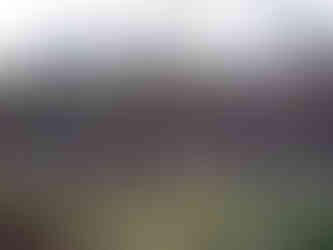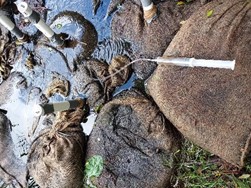Improving water from managed bogs: SWAMP and Reform Water projects
- peatlandsgathering
- Sep 4, 2021
- 2 min read
Updated: Oct 13, 2021
Here Dr Florence Renou-Wilson, Principal Investigator & Director of the MSc Programme in Global Change: Ecosystem Science and Policy at the School of Biology & Environmental Science, University College Dublin, writes on two more innovative peatland projects under way in Ireland, the SWAMP project & Reform Water project.

Peatlands and inland water quality are intrinsically linked. Peatlands typically contain more than 95% water, some of which moves directly into lakes via streams and rivers, as well as into groundwater reserves, transporting nutrients and organic matter, and influencing the chemical properties and aquatic organisms.
What is the problem?
Drainage and removal of surface vegetation alters the peat and pore water chemistry, hydrology and biology. Concentrations of nitrogen, phosphorus, base cations, heavy metals, and waterborne carbon are increased with drainage, although this depends on site specific characteristics and management. For instance, peat extraction is associated with higher concentrations on ammonium (Figure 1), while harvesting of commercial forestry on peatlands is associated with release of phosphorus (Figure 2).
Figure 1: Drainage water flowing from an extracted peatlands in the Midlands.
There is widespread evidence that drained peatlands used for peat extraction (horticulture/domestic turf cutting) and commercial forestry can negatively affect the delivery of water related ecosystem services. As peatlands and terrestrial aquatic ecosystems are intrinsically linked, degradation of peatlands cause deterioration of habitats and reduced biodiversity, not just for the peatland itself, but also throughout the catchment in streams, rivers and lakes.

Figure 2: Forest plantations at various stages of rotation on blanket bog in Co. Donegal
The Research
Solutions are urgently required to satisfy not only Ireland’s international commitments with regards to EU laws but for climate change and sustainability demands.
Rewetting is associated with the stopping of carbon and nitrogen leaching but also increased biodiversity not only on the peatlands but also for aquatic organisms downstream.
The SWAMP project aims to investigate the pressures on Irish waters from drained/extracted peatlands, by monitoring the chemical status of streams and their biota. In addition, it aims to develop mitigation measures in order to protect water quality from pollutants such as Dissolved Organic Carbon and Ammonia leaving extracted peatlands (Figure 3).
Figure 3: Instrumented sediment pond at an extracted peatland site with auto-sampler, sonde measuring continuously water quality. Right: sampling biota downstream.
The Reform Water project is an international WATER JPI-funded project run alongside partners in Finland, Sweden and Estonia. The Irish branch of the project aims to investigate less invasive practices such as Continuous Cover Forestry and biochar filter bags to reduce the harmful effects of peatland forest management on inland waters (Figure 4).
Figure 4: Reform-Water aims to test mitigation measures such as biochar bags (right) in drainage water that could prevent the release of nutrients downstream from clear-felled peatland forests.
Finally, both the Reform Water and SWAMP projects will produce Best Practice Guidelines in terms of management of both peatland forests and extracted peatlands to improve water quality but also water purification, with the latter of value to the regulatory/ enforcement sector, as well as to industry.
For more information check out our twitter accounts: @SWAMP_Project and @ReformWater_IE and http://www.ucd.ie/swamp or email Dr Florence Renou-Wilson Florence.Renou@ucd.ie or Dr Cat Pschenyckyj Cat.Pschenyckyj@ucd.ie















Comments